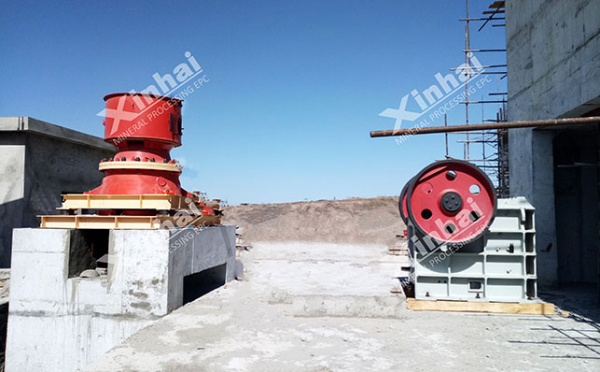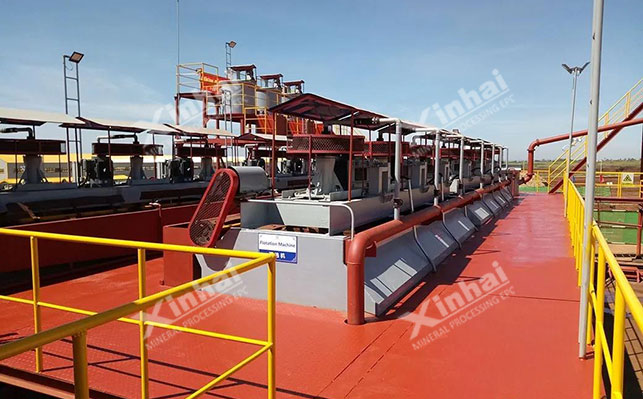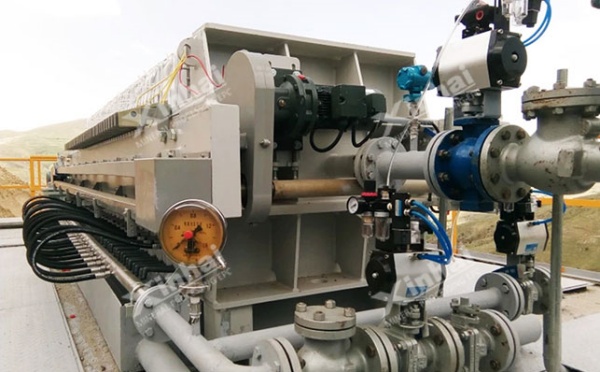If you want to know more information (such as product/process price, etc.), please contact us 24-hour telephone
Nickel is a mighty useful metal that pops up in all sorts of neat things, from gleaming kitchen appliances to the batteries that juice up electric cars. It all starts by hauling nickel-rich ores out of the ground. Among these, nickel sulfide ores are some of the most common and pricey types you’ll find. They tend to buddy up with metals like copper and cobalt in old, molten rock deposits. Man, it’s pretty mind-blowing how these ores keep so many industries humming! To pull out as much nickel as possible without harming nature, we need sharp Nickel Sulfide Ore Processing methods.
Turning raw nickel sulfide ore into usable metal takes a handful of steps. Each one chips away at separating the nickel from the junky rocks and other minerals mixed in.

The job starts with breaking down huge ore chunks into smaller bits. Miners grab heavy-duty machines like jaw crushers or cone crushers to smash the ore. After that, they sort it by size using screens. Any pieces that are still too big? They head back for another round of crushing. Take the mines in Canada’s Sudbury region, for instance—they make sure the ore’s no bigger than an apple before it moves on.
Once the ore’s sized right, it’s time to grind it down super fine. The crushed bits go into a ball mill, which is like a giant food processor for rocks. It churns until the ore’s fine enough for flotation—think as fine as flour. Usually, they grind it so 80% slips through a 200-mesh sieve. This step frees up the nickel bits from the rest of the material, getting them ready for what’s next.
Flotation is where Nickel Sulfide Ore Processing really shines. The ground ore, now a mucky sludge, gets pumped into a flotation machine after mixing in some special chemicals. These include collectors, like xanthates, which help nickel latch onto air bubbles, and frothers, like pine oil, which whip up a foamy layer. The bubbles lift the nickel to the top, leaving the worthless stuff behind. It’s a bit like scooping froth off a root beer float, but way more complicated!

After flotation, the nickel concentrate comes out dripping wet. To dry it, miners use thickeners and filters to suck out the water. For example, a mine in Western Australia might bring the water content down from 60% to about 12% before it heads to smelting. This saves a ton of energy later by not cooking a bunch of soggy ore.
The leftovers, called tailings, still have tiny specks of valuable metals. Miners work to pull out anything useful before dealing with the rest. The wastewater gets cleaned up or reused to follow environmental rules. For instance, a mine in Russia reuses 85% of its water to keep nearby streams clean. The leftover tailings get stored safely so they don’t mess up the land or rivers around them.
Once flotation gives a nickel-packed concentrate, it’s time to clean it up to super pure levels. There are two main paths: pyrometallurgy or hydrometallurgy. With pyrometallurgy, the concentrate gets blasted with heat in big furnaces, like flash smelters or electric arc furnaces. This splits off iron and sulfur, leaving a product called matte. That matte then gets polished through steps like converting or electrorefining to make ultra-pure nickel.
Hydrometallurgy takes a different tack, using acids or ammonia to dissolve the concentrate. Then, techniques like solvent extraction or precipitation grab the nickel. This method’s great for lower-grade ores or when mines want to cut pollution. A plant in Quebec, for example, uses hydrometallurgy to churn out 99.8% pure nickel for batteries. Gotta say, that’s some seriously clean metal!
Nickel Sulfide Ore Processing can be tough on the environment if it’s not done right. It guzzles energy and water, and it can spit out pollution from tailings or gases if you’re not careful.
Smelting in pyrometallurgy eats up a crazy amount of power. So, mines pick energy-saving gear, like high-efficiency furnaces, and fine-tune their setups to use less juice. A mine in Finland, for instance, cut its energy use by 10% after swapping in a newer smelter. Closed-loop water systems let mines reuse water, and dry stacking keeps tailings from leaking into rivers. Scrubbers also clean up gases like sulfur dioxide to keep the air fresh.

Nickel from sulfide ores is a rockstar in tons of industries because it’s tough, fights off rust, and plays nice with other metals. Here’s where it’s a big deal:
Stainless Steel: Most nickel goes into stainless steel for stuff like spoons, car parts, or skyscraper beams.
Batteries: Pure nickel is key for lithium-ion batteries in electric vehicles, like the ones in a Chevy Bolt.
Aerospace: Nickel alloys can take blistering heat, so they’re used in jet engines and spacecraft parts.
Chemicals and Electronics: Nickel helps make catalysts for chemical reactions and coats electronics to make them work better.
Without nickel, we’d be stuck with some pretty outdated tech!
The world’s hungry for more nickel, especially for electric car batteries, so new tech is making Nickel Sulfide Ore Processing smoother and greener.
Better flotation chemicals help snag more nickel, even from stubborn ores. Smart systems with sensors and AI keep an eye on grinding in real-time, spotting problems fast. A mine in South Africa, for example, cut waste by 15% using these sensors. In refining, pressure acid leaching (PAL) is a neat trick that processes concentrates with high pressure and heat, saving energy. Plus, waste heat recovery systems grab extra heat from smelters to power other parts of the plant, like one in Norway that saves 20% on energy costs.
These upgrades make processing quicker, cheaper, and easier on the planet, which is huge with nickel demand shooting up.
Money calls the shots when it comes to picking nickel processing methods. Building fancy plants costs a bundle, but they often save cash over time by working smarter. When nickel prices spike—like in 2022 when they hit $30,000 per ton—mines are more likely to splash out on high-tech gear to pull more nickel from low-grade ores. But when prices dip, they lean on simpler, cheaper ways, even if they miss some nickel.
Energy bills are a massive factor too. A mine in Indonesia, for instance, started using solar panels to power some of its operations, cutting costs big time. Choosing the right process hinges on the ore type and local setup, always trying to balance making money with being kind to the environment.
Even with slick new tech, Nickel Sulfide Ore Processing isn’t all smooth sailing. Some ores are a real pain to work with, making it tough to pull the nickel out cleanly. Plus, environmental rules keep getting stricter worldwide, so mines have to step up with cleaner methods.
But there’s a bright side too. The electric vehicle boom is driving wild demand for pure nickel—think batteries for Tesla or Lucid cars. This has sparked big spending on green tech, like a new plant in Australia that makes Class I nickel with 30% less emissions. The fact that nickel ores come in different types also lets mines tweak their processes to fit, boosting profits and eco-friendliness.
With the world pushing for cleaner metals, Nickel Sulfide Ore Processing will keep changing. It’s not just about cranking out nickel—it’s about doing it without wrecking the earth. That’s a mission worth getting behind, right?